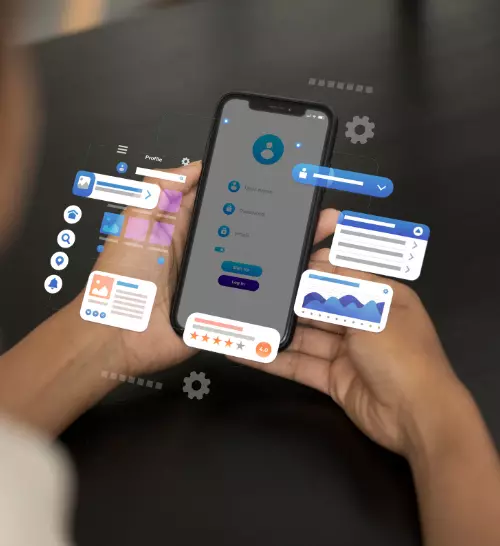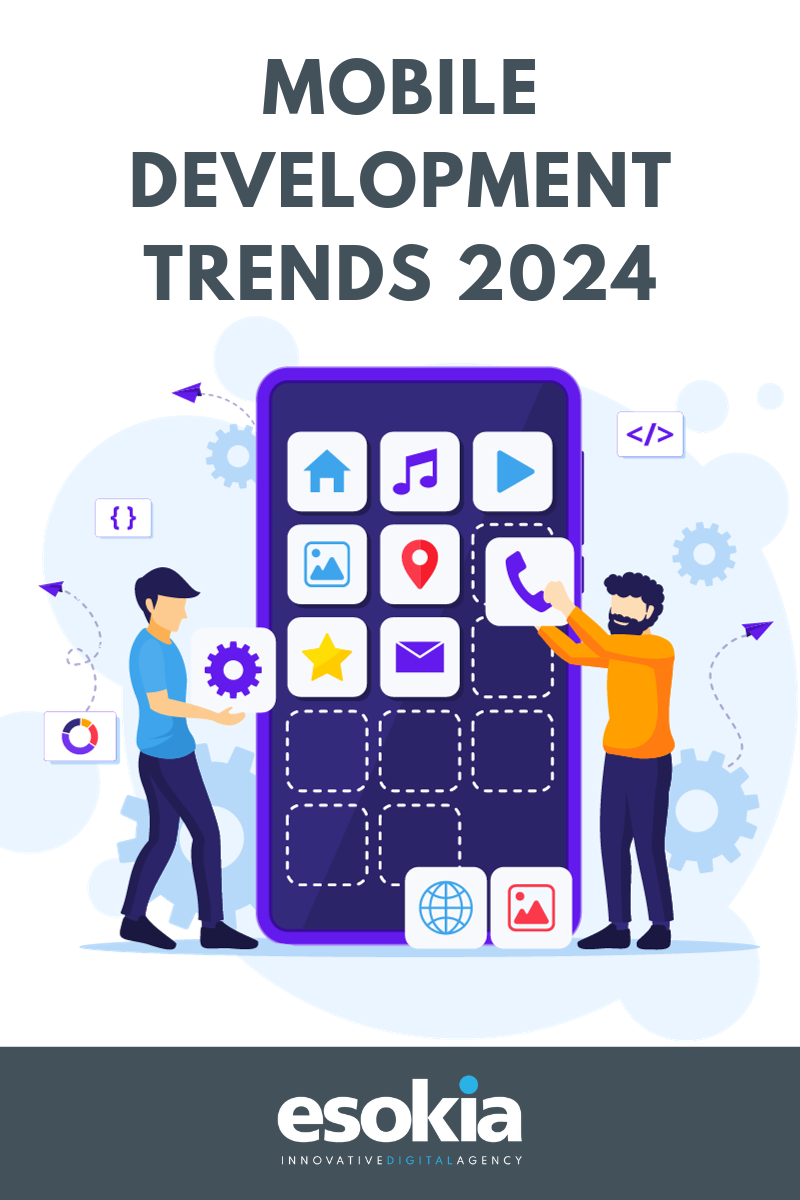
- Application mobile
Développement offshore : Comment créer une application mobile tout en maîtrisant son budget ?

Trends in mobile application development 2024 are proving crucial in redefining our daily lives. They are bringing about a profound transformation in the way mobile application agencies operate, and exerting a considerable impact on the user experience. To stay at the forefront of this dynamic market, it's imperative to keep abreast of the latest developments. In this blog, we'll take a close look at the 6 key app development trends to watch out for in 2024.

Artificial intelligence (AI) has become an essential tool in the world of technology. Its impact on various sectors is undeniable, particularly in the field of mobile application development. AI has the ability to transform mobile application interfaces, making them more intuitive, efficient and attractive to users.
AI algorithms are able to analyze user behavior patterns, understand their preferences and personalize the interface accordingly. This translates into an enhanced user experience, smoother interaction and increased user satisfaction. What's more, AI can also help identify and resolve technical problems, improving overall application performance.
AI optimizes mobile application interfaces by using machine learning techniques to analyze and understand user behavior. It can predict user actions, simplify navigation processes and make the interface more user-friendly. For example, AI can offer suggestions based on the user's previous actions, making navigation easier and the experience more personalized.
AI can also help solve technical problems. For example, it can identify bugs and errors in the application and propose solutions to resolve them. This improves application performance and ensures a seamless user experience.
Blockchain technology is a rising trend with the potential to transform a variety of sectors, including finance, healthcare and education. It offers a host of benefits, such as transparency, security and efficiency, which make it attractive to many businesses.
Blockchain is a decentralized technology that enables information to be stored securely and transparently. It offers a solution to security and fraud issues, as every transaction is permanently recorded and cannot be altered or deleted. What's more, Blockchain can improve efficiency by eliminating intermediaries, reducing costs and speeding up transactions.
The era of application development has seen exponential growth in on-demand applications, fueled by advances in mobile technologies. These futuristic applications, which integrate new functionalities to meet users' needs, have become a dominant force in the application market.
Thanks to artificial intelligence, these on-demand applications offer a personalized user experience, a UX/UI trend that is gaining in popularity. On-demand applications are now seen as innovative, offering tailor-made, efficient services.
Market analysis shows that on-demand applications are also profitable for businesses. They reduce operational costs and enable companies to reach a wider audience. Technology forecasts suggest that this trend will continue to develop.
User interface (UI) and user experience (UX) design remain crucial to the success of mobile applications. In 2024, the focus will be on creating interfaces that are visually appealing, intuitive and user-friendly.
Design trends such as dark mode, neomorphism, eye-catching animations, intuitive gestures and immersive 3D graphics take center stage. These design elements aim to captivate users, improve user retention and make navigating the application a fluid and pleasurable experience.
Progressive Web Applications (PWAs) are a new trend in application development. These innovative applications, which combine the best features of websites and mobile applications, offer a superior user experience. PWAs are designed to work on any device, making them accessible to a wide audience.
PWAs also offer a faster, smoother user experience. Thanks to the integration of new functionalities, such as the ability to operate offline, PWAs have become a key element of the application market.
In terms of profitability, PWAs are also beneficial for businesses. They reduce development and maintenance costs, making them attractive to businesses.
There are several reasons why PWAs have become so widespread. Firstly, they offer a better user experience. Thanks to the integration of new functionalities, such as the ability to operate offline, PWAs have become a key element of the application market.
In addition, mobile social networks have played a key role in the popularization of PWAs. With their ability to load quickly and run on any device, PWAs have become increasingly popular with users of these platforms.
Finally, the rise of blockchain has also contributed to the popularity of PWAs. By offering greater security and transparency, blockchain has made PWAs even more attractive to users and businesses alike. Technology forecasts suggest that this trend will continue to develop.
In the field of mobile app creation, the impact of augmented reality and virtual reality is increasingly perceptible. These innovative mobile technologies are transforming the app market, offering revolutionary new functionalities and user experiences (UX/UI). Futuristic applications incorporating augmented reality and virtual reality are opening up new perspectives for mobile e-commerce, tourism, education and many other sectors.
Augmented Reality (AR) is a technology that superimposes digital information onto the real environment, enriching the user experience. Mobile e-commerce applications can take advantage of AR to enable customers to visualize products in their own space before making a purchase.
Virtual reality (VR), meanwhile, creates a fully immersive environment, offering users the chance to visit remote locations or take part in live events from anywhere in the world. Futuristic applications using VR can offer unique experiences, especially in the fields of tourism and education.
Augmented reality and virtual reality are mobile technologies that are transforming application development. They introduce new functionalities that enable the creation of futuristic applications and innovative user experiences. For example, in mobile e-commerce, augmented reality enables customers to visualize products in their own space before making a purchase. It's a feature that is transforming the online shopping experience and redefining the app market.
However, the adoption of these mobile technologies presents challenges. Developers need not only to master the technical aspects of augmented reality and virtual reality, but also to understand how these technologies can be used to create compelling user experiences. In addition, they need to be aware of the security and privacy issues that can arise when using these technologies.